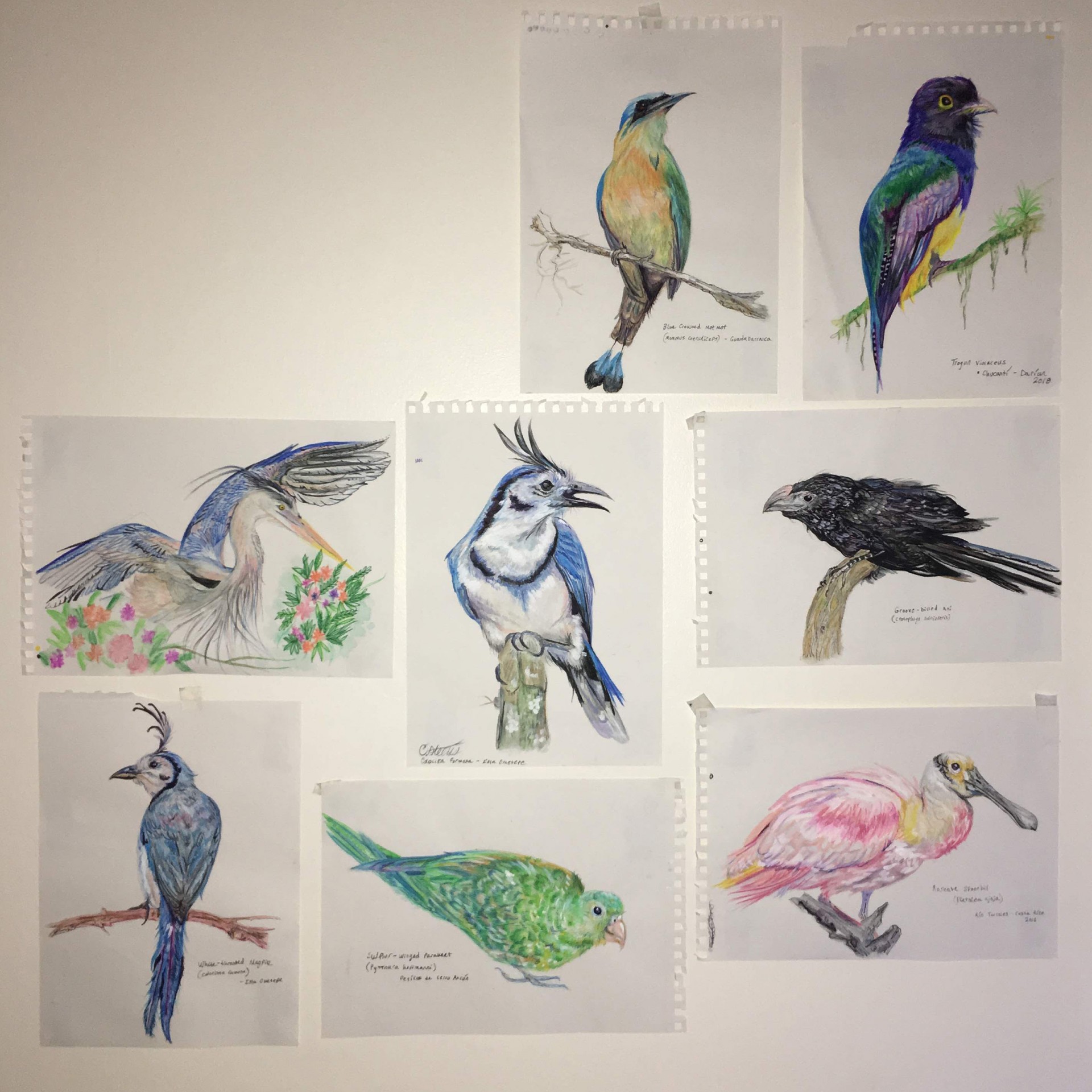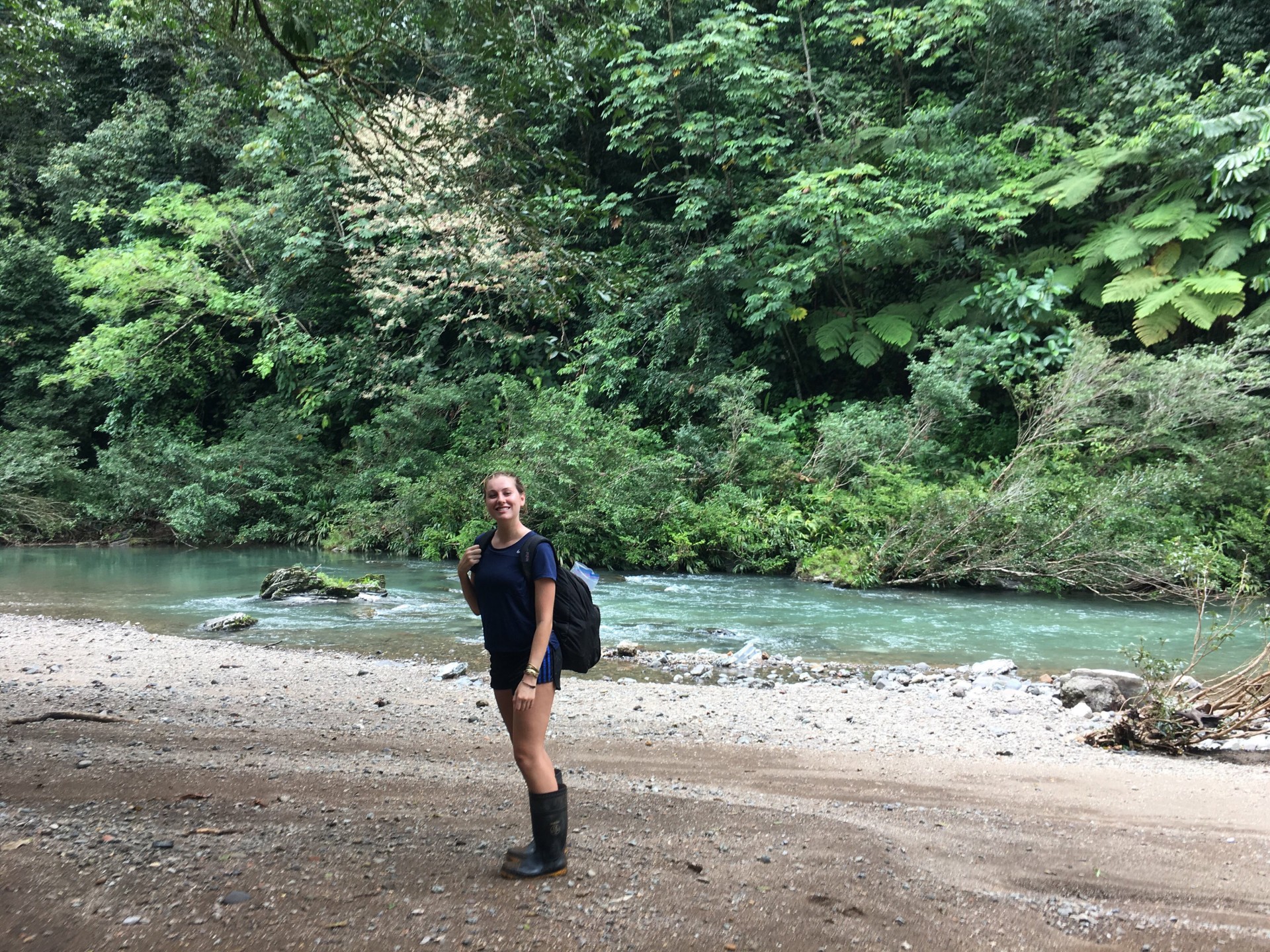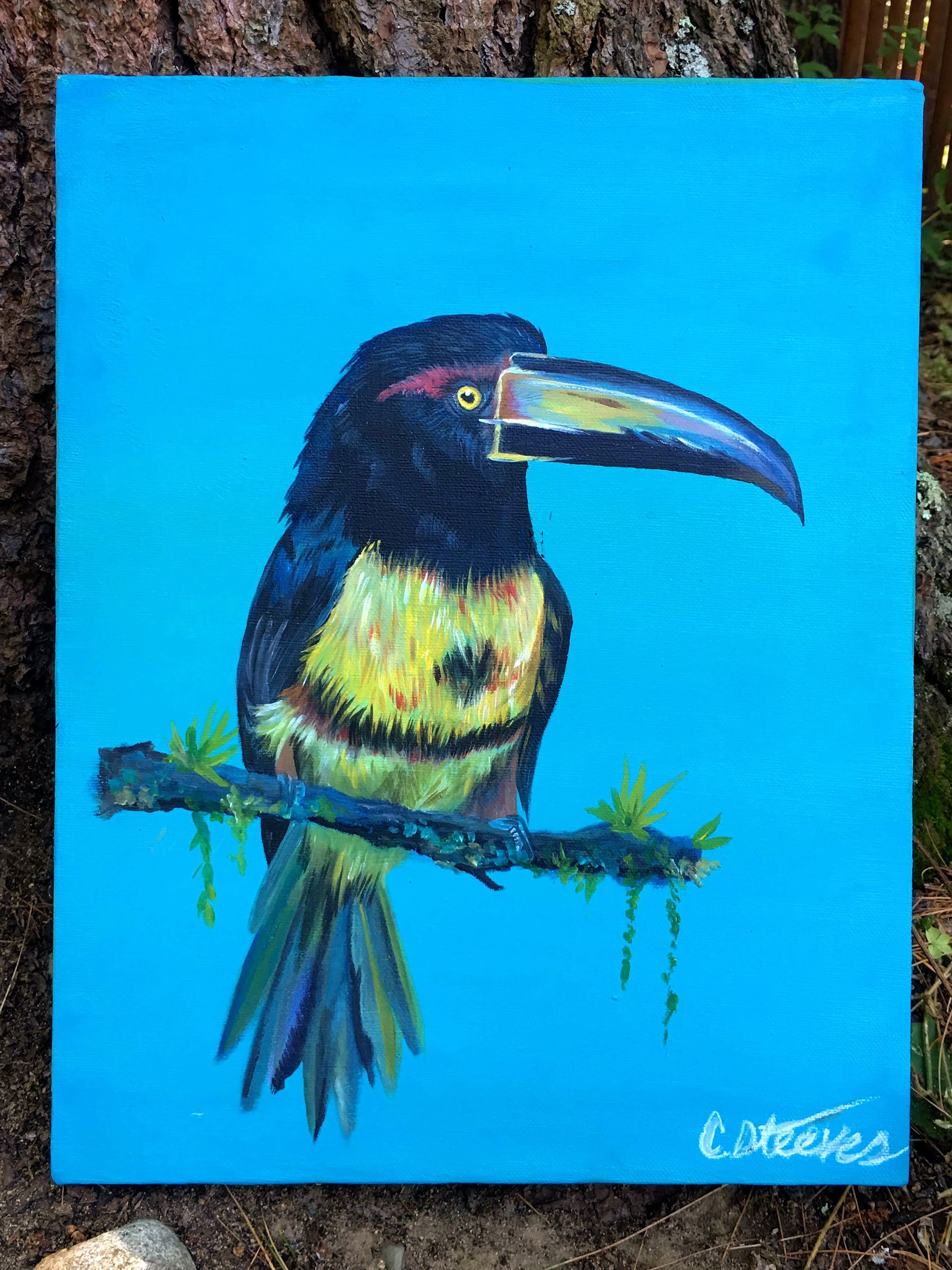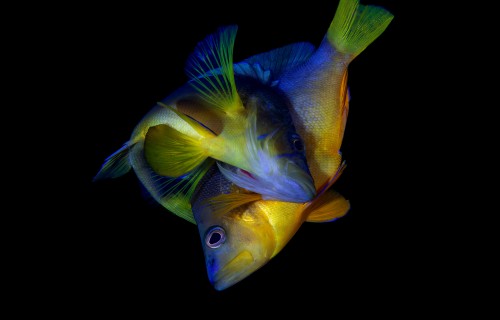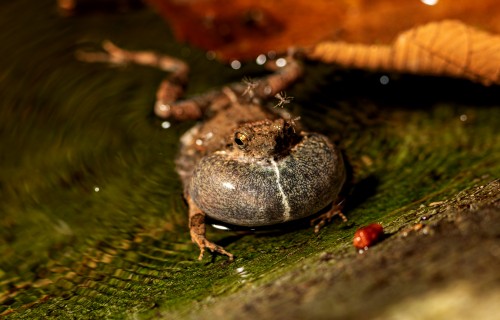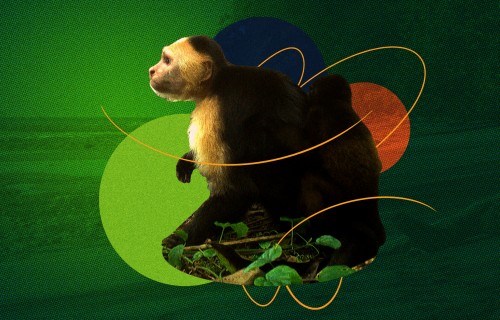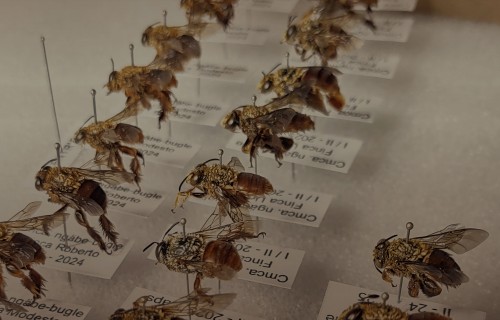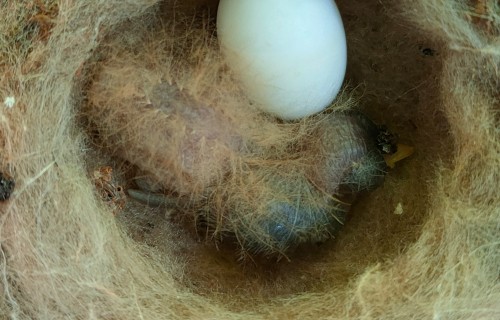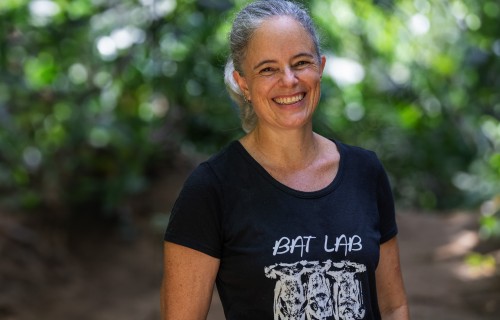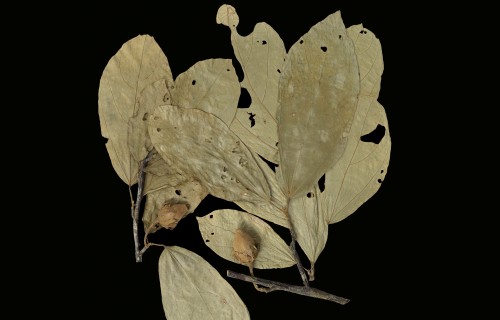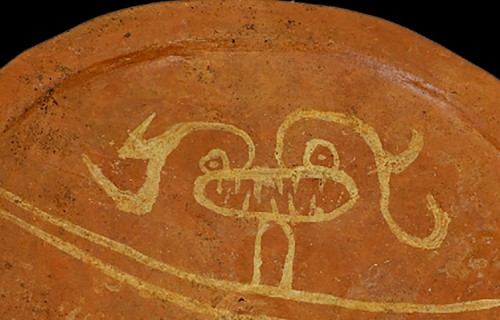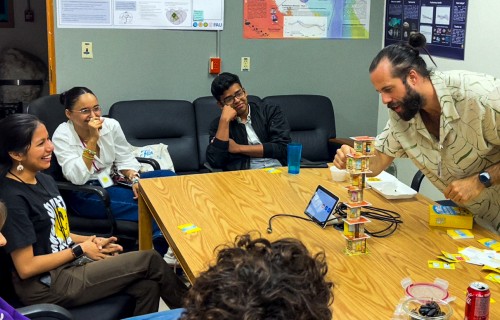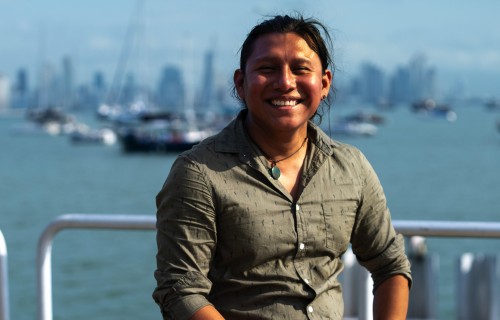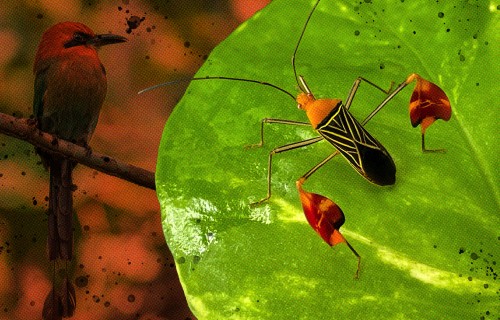A comparison of colorful hamlets
from the Caribbean challenges ideas
about how species arise
Our colorful
world
Words, Birds, and Watercolor:
an Interview with Charlotte Steeves
Panama
Katie Griswold, Intern in the O’Dea Lab
Charlotte Steeves studies the relationship between land use and seasonal river stream flow at STRI as part of the Agua Salud project. She has been a STRI intern since January 2018. However, her involvement with Panama goes back much further: In some ways it seems like she’s been preparing for this adventure for her whole life.
When Charlotte speaks of her experience, her speech is peppered with passionate hyperbole. Still, her voice is so genuine one can’t help but believe her every word. This rufous motmot must be the most astounding thing you will see all day; the sloth that lives next to her office at Naos is a national treasure; the view from Ancón, her hillside neighborhood, is hands down the best in the city. It is with equally unbridled joy that she describes her lifelong love of the outdoors, the circumstances that first drew her to Panama’s landscapes, and the evolving reasons that keep calling her back.
So, which were your first interested in, art or science?
I would say it was simultaneous. My dad brought me up in the woods. He’d teach me, “Don’t be afraid of these spiders!” and then I would hold the spider and be like, “Okay, this isn’t something to freak out about.” I also learned tons of taxonomic names of species from such a young age. I’d just rattle them off. My dad is a USGS geographer, but he had wanted to be a naturalist before I was born. He passed his passion for biology on to my brother and me.
At the same time, I’ve always had this love of painting. I don’t know where it comes from; nobody else in my family is really like that. But my love for nature and my love for art formed side by side. I used to draw cultures from all around the world, inspired from books. I had about 400 paintings at one point. I thought I was going to be a cultural anthropologist, actually.
Anywhere in particular?
Central Asia.
“I’ve always had this love of painting. I don’t know where it comes from.” - Charlotte Steeves
Huh. That’s pretty different from where you wound up.
Well, then in senior year of high school I went to Spain and started to take Spanish seriously; I decide I would minor in it. Before that, I did not take learning the language seriously at all. But when I got there... I pretty much had a spontaneous and complete transformation. I live experiences and let them affect my whole body, 100%.
So that’s the origin story. What was the next chapter?
My college professors really influenced me. I had this one professor who taught advanced hydrology- He was just so enthusiastic. We had labs twice a week, which he would give hints about but left out the big reveal until that day. So sometimes we would unexpectedly find ourselves up to our knees in bog water, looking at frogs and invertebrates.
Wow, that sounds like Hogwarts.
[Laughs,] Yeah, he was kind of a wizard. So the semester afterwards, I went to study abroad in Panama. Everyone got to create their own independent research project. I designed this whole thing about monitoring the ecological condition of tropical rivers, examining the relationship between water quality and land use using sensitive aquatic invertebrates as bioindicators. My research demonstrated a clear decline in water quality as you moved down the watershed, closer to the cities. The coolest thing (my dad helped me a lot with this) is I delineated drainage basins in the area, identifying the dominant land use and calculating the percentage of forest cover in each basin. That had never been done before in this region of Panama, up in the mountains of Veraguas. The entire project won an award and wound up on the school website.
I also wouldn’t have been able to do any of this without my local guide [Yara Patricia] in Santa Fe. We crawled up and down those mountains through places you would never reach if you weren’t brought up there. She was a student too; she studies mangrove snails and is a semi-professional waterfall explorer in her free time. It was just her and me out in the field, all the time. We’re still friends!
Charlotte Steeves studies the relationship between land use and seasonal river streamflow at STRI as part of the Agua Salud project.
That sounds transformative. So, your undergrad experience was all about water quality, and your current project with STRI is also hydrology focused. But lately it sounds like your focus has shifted to another subject. What’s with the birds?
During junior year, I was also taking a ton of difficult classes. My way of coping with the stress was to paint. And my subject of interest was birds. I don’t even know why, I’ve just always loved them.
What inspires you to paint your subjects?
I just can’t help but cry when I see a rare bird. It’s their colors, their behavior, their song. It’s absolutely everything about them- I don’t know!
Top 5 favorite birds of the moment: ready, set, go.
Quetzals (seeing a Resplendent Quetzal changed my life), the Common Potoo, and Nightjars (I’m painting one right now). I also love any kind of Trogon...and that little Toucan we saw the other day, right outside our house. Oh, and you know what makes a really cute sound? A Motmot! It makes this low “merr” sound, like a robot. I guess that was six, but I couldn’t choose.
“My way of coping with the stress was to paint. My subject of interest was birds.” - Charlotte Steeves
Ooh, I don’t think I’ve ever seen a Nightjar.
They’re spectacular. They’re nocturnal, and the feathers that extend around their faces are like whiskers. They help them funnel food, and act as sensors. I’ve been fascinated with them since I was a kid. There was a picture of one in my dad’s encyclopedia. I needed to see one in the wild before I knew anything about Panama. And now I’ve seen so many.
I’m astounded. Have you ever considered switching to ornithology?
I’ve thought about it. I’ve always been fascinated by temperate migratory birds. In another undergraduate project, in Massachusetts, I did this project on these threatened ground nesting species- Bobolinks and Savannah Sparrows. I went to the field every single morning from Cape Cod. I’d wake up around 4am to get there at 5am or 6, and I’d do these breeding bird surveys. Eventually I had enough data to map the hub of their activity and possible nesting sites, and I convinced the property owner to leave those little parcels alone. The best part was the day I watched 5 fledglings leave their nests. I basically cried. I do wonder if the farmer protected that area after I left though, if I really made an actual difference the following year.
It is so rare for us as scientists to see our work have tangible and immediately positive effects. You saw lives impacted. That must have been really rewarding. It also sounds related to your water work- it’s all conservation efforts from an integrated human-natural systems perspective.
Yeah, that’s true. I guess, now I’m at a crossroads for what to do with the next step in my career. I’m not exactly sure where I’m going to wind up.
But I think I had an epiphany when I finally saw Quetzals. I had been painting and painting them from photo references before I did my study abroad in 2016, but my group never saw any. I was so mad! But it was fine, I knew I would come back someday. I also never saw them when I backpacked through Costa Rica and Panama again, in 2017. I was even mimicking their sounds to attract them! Still, that visit gave me the chance to meet [STRI director] Matt Larsen and to apply for the Agua Salud project. It was a perfect continuation of my undergraduate research- it was all about these things I already had a background in. STRI accepted my application right away.
Anyway, when I finally saw a mated pair this last time [in the cloud forest], in March 2018- it was like a sign. It was everything I could have dreamed. And I just thought, if you can work on something in a place that brings you so much joy- That’s what it’s all about. It’s all going to be worth it in the end.

